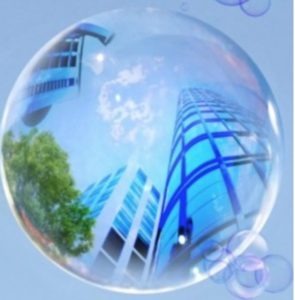 Across Singapore, the property market was booming. Interest rates were low, prompting buyers to take on more debt. Confidence was high. Banks built regional headquarters in Singapore and jobs were created. Singapore’s skyline changed drastically. A new financial district rose and Marina Bay Sands, a three-tower building housing a casino with a boatlike structure on top, was built for a reported $5.4 billion.
Across Singapore, the property market was booming. Interest rates were low, prompting buyers to take on more debt. Confidence was high. Banks built regional headquarters in Singapore and jobs were created. Singapore’s skyline changed drastically. A new financial district rose and Marina Bay Sands, a three-tower building housing a casino with a boatlike structure on top, was built for a reported $5.4 billion.
With the government unable to contain the heated market, the growing presence of foreigners and the rising cost of housing became a flash point for discontent. And Sentosa, with its new villas, yachts and luxury condominium towers, became a particular symbol of the rising inequality for many citizens.
Faced with simmering discontent over rising living and housing costs, the government executed a succession of cooling measures that have hit the high-end market especially hard…
On Sentosa Cove, few people are buying. Most of the unsold units from recent developments have been taken off the market and are being leased instead.
The few recent sales paint a grim picture. Most sellers have taken sizable losses.
– From the New York Times article: A High-End Property Collapse in Singapore
My hometown of New York City is currently ground zero for a luxury apartment building boom driven primarily by oligarchs using the units as savings accounts, and foreign criminals looking to launder wealth accumulated via corruption, fraud or worse. This isn’t a new story, I’ve been writing about it for several years (links at the end), but a recent New York Times piece titled, Stream of Foreign Wealth Flows to Elite New York Real Estate, has put the issue front and center.
Naturally, New York City isn’t the first, and certainly won’t be the last place to encourage hot foreign money to flow into its real estate sector in a haphazard and harmful manner that could have severe long-term repercussions once the boom turns to bust — which it invariably always does.
The parallels of the luxury boom in Singapore’s Sentosa Cove to what is currently happening in Manhattan are striking. In an attempt to boost foreign investment a decade ago, the Singaporean government started offering tax incentives and other favorable policies to lure in foreigners. What followed was an incredible boom during which the value of prime properties rose by 80% from 2004 to 2013.
The boom led to prices rising to0 fast for locals, inequality became a major political issue, and before you knew it, a scared government rushed through measures to reduce foreign investment. Since then, sales have virtually stopped and prices have plunged. As is always the case, the cycle plays itself out.
From the New York Times:
SINGAPORE — Lamborghinis, Porsches and Bentleys fill the driveways of multimillion-dollar villas in Sentosa Cove. Yachts line the 400-berth marina nearby. Some houses have guardhouses for security.
“We call it the Monte Carlo of Asia,” said Stephane Fabregoul, the general manager of the W Singapore hotel in Sentosa Cove.
But signs of a slowdown are just beneath the shiny surface. The grass on front lawns has turned brown from neglect. Two condominiums sold last summer for less than half their original price. Some houses are empty.
As Singapore pitched itself as a place for Asia’s rich, Sentosa Cove attracted many wealthy Chinese, Malaysians and Indonesians. But the momentum behind that boom is slowing, putting the gated community at the center of Singapore’s real estate weakness.
The slowdown has been orchestrated, in part, by Singapore’s leadership.
Faced with simmering discontent over rising living and housing costs, the government executed a succession of cooling measures that have hit the high-end market especially hard.
A property sales tax of 18 percent for foreigners has reduced buyers’ enthusiasm. Levies are nearly as high for those hoping to flip their properties in the first or second year, also leaving the market in limbo.
“So far, Sentosa Cove has been the worst hit because the market frenzy was probably most apparent there,” said Wee Siang Ng, head of research at Maybank Kim Eng Securities. The value of prime properties rose by 80 percent from 2004 to the market peak in 2013, according to Mr. Ng.
“It was a free-for-all,” Mr. Ng said. “The global economy was picking up so people plowed money into Sentosa.”
Donate bitcoins: 35DBUbbAQHTqbDaAc5mAaN6BqwA2AxuE7G
Follow me on Twitter.


